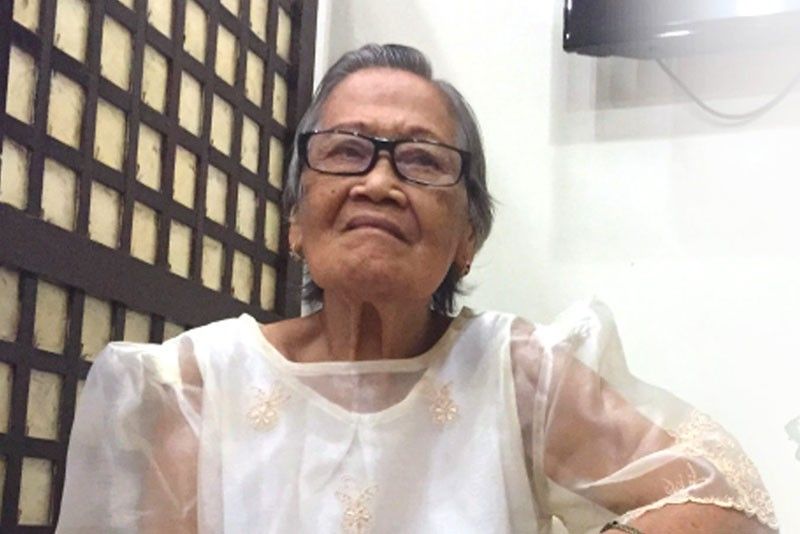Comfort woman wants statue back on Baywalk

MANILA, Philippines — Estelita Dy, now 88 years old, still could not believe how a 13-year-old tomboy like her was raped for three weeks by Japanese soldiers in 1945.
More than seven decades have passed since she was kidnapped at a market in Talisay, Negros Occidental and kept at a garrison during the outbreak of the World War II in the country.
When news broke out that a statue was erected at the Baywalk along Roxas Boulevard in Manila to commemmorate their sacrifices during the war, she felt elated.
“When I saw the statue, I thought to myself, ‘Finally, our dream to have a monument for us comfort women had been realized,’” Dy said in an interview with The STAR.
But after only four months since being erected, the bronze statue of a veiled, blindfolded woman in a Filipiniana attire, who served to commemorate their sacrifices during the war, was taken down to give way to a floodway control project.
“It’s like they don’t have respect for us anymore. It’s a personal insult to us comfort women,” Dy said.
Dy is among the first comfort women who came out in 1993 to share their harrowing stories of being raped by Japanese soldiers during World War II in the country.
Dy fought back tears as she recounted her three-week ordeal at a sugar mill used as a garrison. At 13, she was the youngest among those captured.
She said she recalled resisting a Japanese soldier who tried to rape her. The soldier slammed her head until she lost consciousness, Dy said, demonstrating the way the soldier gripped her hair.
“Whenever they rape me, I just close my eyes and cry. I just think about what the guard told me when I tried to resist – they would kill me if I fight back,” Dy said.
A farmer’s daughter in a province known for its sugar plantations, Dy said she was able to escape after Japanese forces withdrew from Negros Occidental when the American troops arrived.
She fled to Manila after graduating from Grade 6 to earn a living and forget the horrifying memories she left at home.
Dy said her brother Emilio, a guerilla, was also killed during the war.
She said the number of comfort women are dwindling. “I don’t even know how many of us remain. We used to be 174. Maybe there are four of us left,” Dy said.
Asked what she would like to say to President Duterte, who said he would rather transfer the statue than insult Japan, Dy said she hoped the President does not become a lapdog of Japan.
“It’s like they want to erase us, so the next generation would forget about us,” Dy said of the removal of the statue.
She called on the city government of Manila to reinstall the statue along Roxas Boulevard, or at least place it where the public would see it, so the next generation would not forget their ordeal.
“The world needs to know that here in the Philippines, there are comfort women, too… It’s like they want to erase our existence and for the world to forget about the crimes the Japanese soldiers committed,” Dy said.
Dy could only hope for one thing for the next generations – for war never to erupt again.
“If there is another war, there will be new comfort women. We don’t want war anymore. We don’t want our children to suffer the way we suffered,” she said.
- Latest
- Trending




























